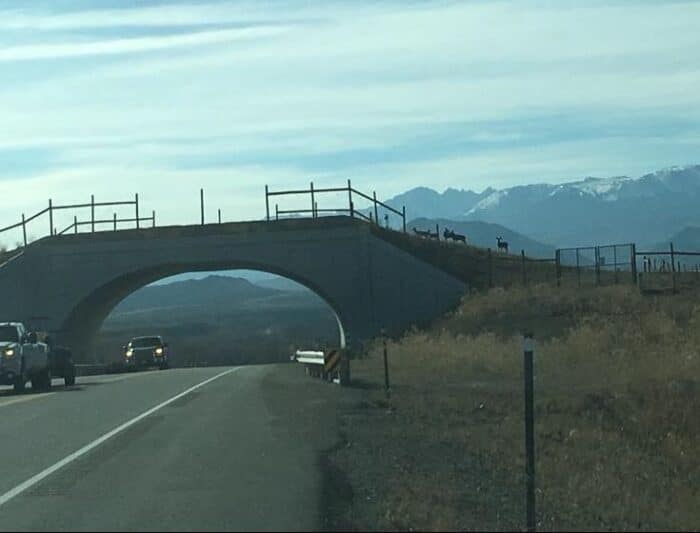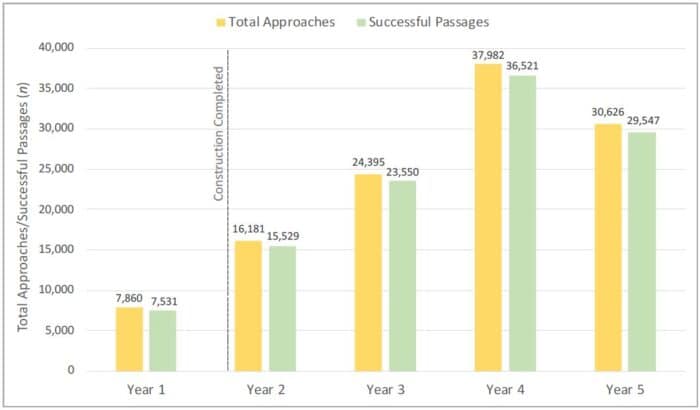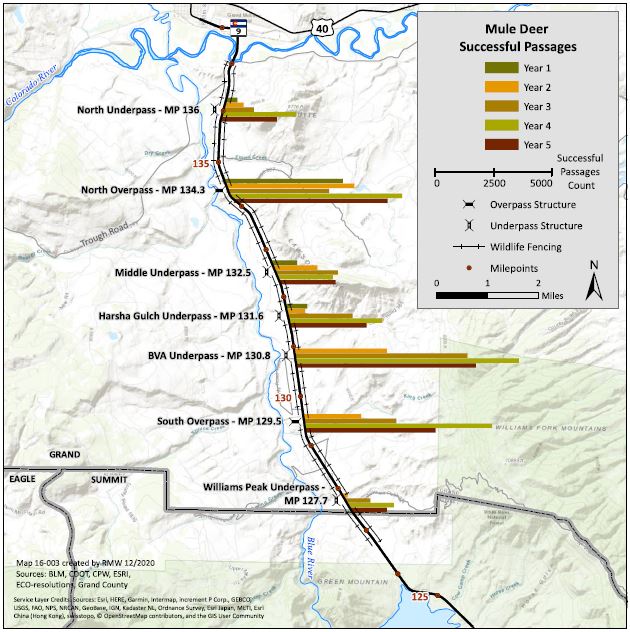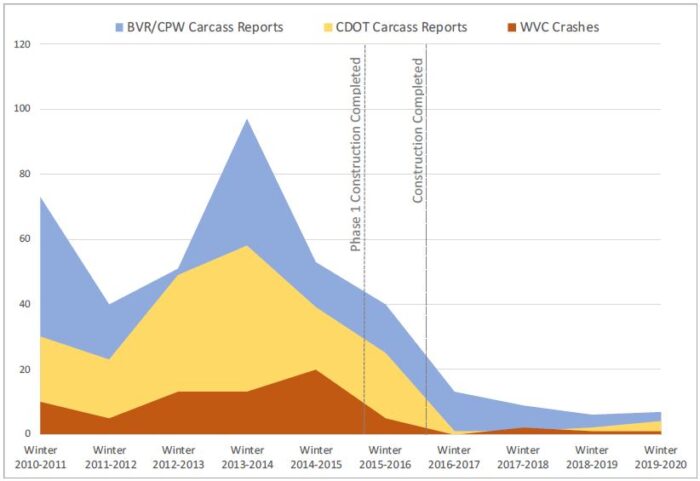CO State Hwy 9 Project – Final Monitoring Report
The final monitoring report for the Colorado State Highway 9 Safety Project was released this year, and the results point to a resounding success for the project, much to the excitement of the project stakeholders. The project has followed a long road from its initiation in 2011, through approval for funding in 2013, to the project’s final completion of construction in late 2016.
Since the 1st phase of construction was completed in late 2015, a 5-year comprehensive monitoring program has tracked wildlife responses and vehicle collisions from start to finish. This past spring, the release of the year-5 monitoring report presented the results of post-construction monitoring from December of 2015 through November of 2020. Participating in the study were researchers and scientists from CO Parks & Wildlife (CPW), CO Department of Transportation (CDOT), US Fish and Wildlife (USFWS), and ECO-Resolutions of Golden, Colorado.

Researchers continued to count wildlife-vehicle collisions (WVC) throughout the 5-year study period, adding to 5 years of pre-construction data for a total of 10 years’ worth of information. The study utilized 62 motion-triggered cameras at 49 locations to record animal movements and behavioral responses to the wildlife mitigation structures, which include 5 wildlife underpasses, 2 wildlife overpasses, 29 wildlife guards, miles of wildlife fencing and 61 escape ramps. The findings of the report are impressive, with some highlights listed below:
- The successful movements of mule deer over or under the wildlife crossings increased dramatically, including all age and gender classes (see Figures 3-1 and E-2 below), with a total of 112,678 successful crossings over the study-period. This translates to an overall success rate of 96%, which indicates that the mitigation has been highly effective in increasing mule deer connectivity across Highway 9.
- The mitigation structures have resulted in a 92% reduction in WVCs and a 90% reduction in wildlife carcasses (see Figure E-1 below), vastly improving safety for motorists along the highway corridor.
- In addition to mule deer, cameras have captured 16 additional species using the structures, including large and medium-sized animals like elk, white-tailed deer, pronghorn, black bear, bobcat, coyote, mountain lion, bighorn sheep, and moose, as well as smaller animals such as red fox, badger, hare, skunk, otter, turkey and raccoon.
- The study also found that round bar wildlife guards were more successful in repelling mule deer from entering the fenced road corridor (90% repel rate) compared to flat bar wildlife guards (83% repel rate).
- Escape ramps that allow wildlife caught along the highway corridor to return to safe habitat on the outside of the wildlife fencing were most effective when placed below the road grade and without rail fences on top.



After 5 years of intensive monitoring, the Colorado State Highway 9 Safety Project has clearly met or exceeded most of the performance measures that were established after construction was completed. A cost-benefit analysis conservatively estimates that the mitigation measures will pay for themselves in 56 years, which is far less than the minimum 75-year lifespan of the structures. The cost savings from prevented WVCs and conservation benefits to wildlife, especially mule deer, far outweigh the cost of construction and maintenance of the structures. Finally, the success of the project and the monitoring data it generated will help transportation and wildlife agencies plan and implement future projects for maximum benefit to both wildlife populations and human motorists.
For additional information and details, please follow the links below:
Colorado Department of Transportation’s Summary Video
Colorado Parks & Wildlife Highway 9 Project Page
Colorado Department of Transportation Project Monitoring Page
Monitoring Study Literature Review
Year 5 (Final) Monitoring Report
Tags: Highway 9 Project, mule deer, wildlife